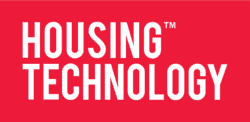The prospect of up to six months of social isolation has immediately drawn attention to connectivity in people’s homes. That attention has been largely focused on the high bandwidth needs of entertainment, social engagement and working from home. The communication networks have all come out to share their network loading data and explain to us that there is plenty of bandwidth for watching movies, sales presentations and group video-chat simultaneously. We needn’t worry that those at the top of the digital inclusion curve will continue to do what they’ve always done and many of us will pick up new digital skills during this challenging time.
What about people who are digitally excluded?
At a time when we are leaning on digital connectivity as our only connection with the outside world, how do we learn lessons from the challenges that social isolation has posed us? We can look at the problem from two perspectives, first the barriers to digital inclusion and then secondly the digital connectivity which we most urgently need during the isolation period.
The Good Things Foundation in their research into those who are digitally excluded discovered that as of 2018, a disproportionate 63 per cent of people who identified as digitally isolated were residents in social housing. In their research, they identified four key groups whose reason for digital isolation could be easily categorised and grouped:
- “It’s not for me” – this is a group that does not see any personal benefit to being online.
- “I don’t have the right support” – this group could be online but they currently lack the support or a device to get online.
- “It’s too complicated” – this group is primarily driven by a concern that they don’t have the skills to stay safe while online.
- “It’s too expensive” – This final group is concerned with the affordability of connection costs.
How are we trying to improve the situation?
Much of the focus in recent years has been on driving awareness of the personal benefits of digital connectivity as well as demonstrating the availability of training. However, it has been difficult in many cases to justify to those who are currently digitally excluded the benefits of learning and investing in equipment to access the internet.
Having personally seen the operation of a well-run, free training programme, I don’t believe those who previously didn’t place any value in on-demand television shows or video calls with grandchildren would now do so. The training programme found low attendance rates but, more concerningly, low retention rates. This shows that our approach to digital inclusion has to fundamentally change; even people who considered themselves digitally excluded yet had seen the potential benefits of digital enablement still found that those benefits were not sufficiently attractive to change their minds.
I think that more thought and effort need to be put into reducing the perception of difficulty when getting online – hopefully beginning to form habits that day-to-day lead to better outcomes. With the advent of smart technologies, familiar devices and digital experiences can be integrated easily without triggering feelings of unease at the prospect of ‘going online’.
For example, in our recent engagement testing, Switchee has found a significant response rate (92 per cent) to messages sent via our thermostat screen. These non-traditional digital messages are reaching residents who don’t engage with other digital communication methods.
Digital inclusion is a huge problem that can easily be forgotten
In an emergency, we look to ensure that both ourselves and our loved ones are safe and we start with the very basic physiological needs – shelter, warmth, food and water. We want to know these basic needs are covered.
However, when the whole world is in isolation, checking that those needs are actually being serviced becomes a question of technology. Without an ability to communicate with tenants, housing providers are forced to leave them to their own devices. Digital inclusivity means the use of technology so that residents are connected to somebody who knows when (or if) their most basic and most important needs are being met and can do something about it.
Those of us who have been relying on digital media and communication during this period can easily forget the challenge the elderly and most vulnerable face in this time. This isn’t the first crisis that isolates our most vulnerable and it won’t be the last. We should be using this time to plan how we can improve digital inclusion strategies across the country to ensure that even during our most dire moments, the most vulnerable are not suffering needlessly.
What does all this mean?
This period of social isolation has forced us all to go back to basics and there are lessons here as we look to our future strategies for digital inclusion. To reach those who need it most, digital inclusion needs to be seamlessly incorporated into familiar day-to-day processes and devices to make them simply smarter without worrying vulnerable populations about the dangers of ‘online’. Connectivity needs to focus on their basic needs and to ensure that support is always available.
At Switchee, we believe this difficult time has been a rallying call for ‘back-to-basics’ IoT platforms and we are working as hard as we can to improve the quality of life for those who have our devices installed in their homes.
Tom Robins is the chief strategy officer at Switchee.

